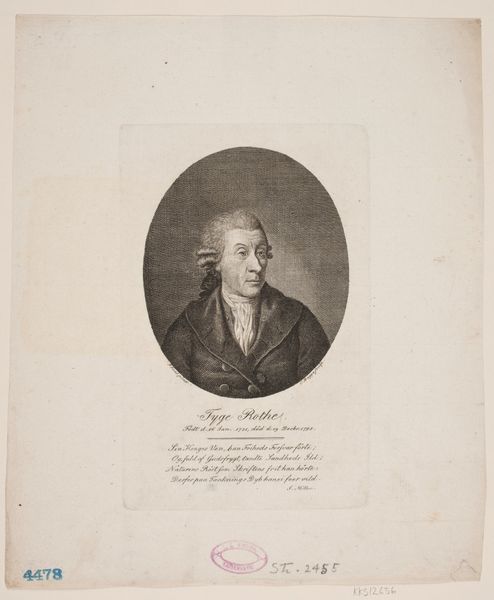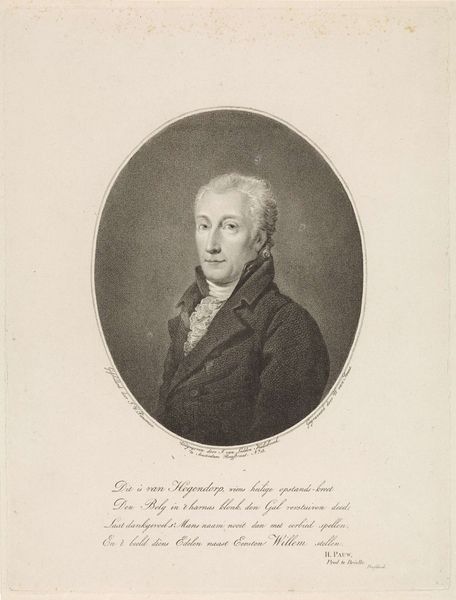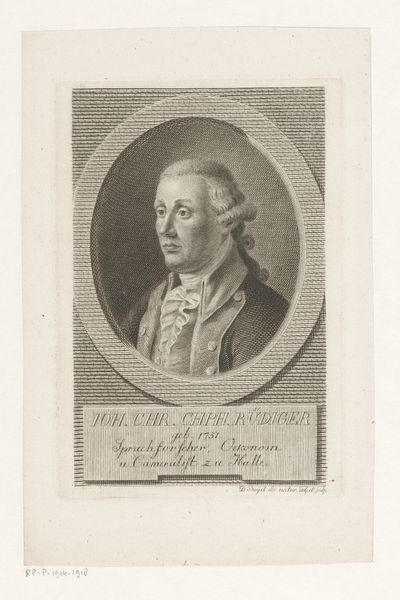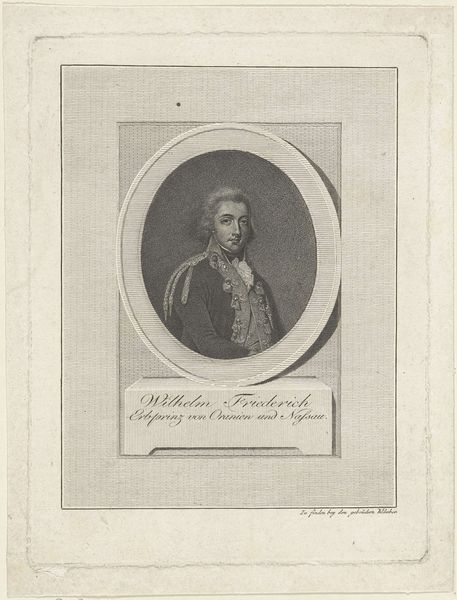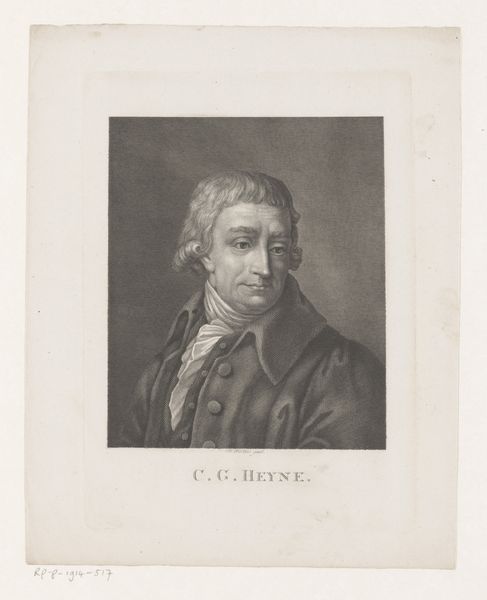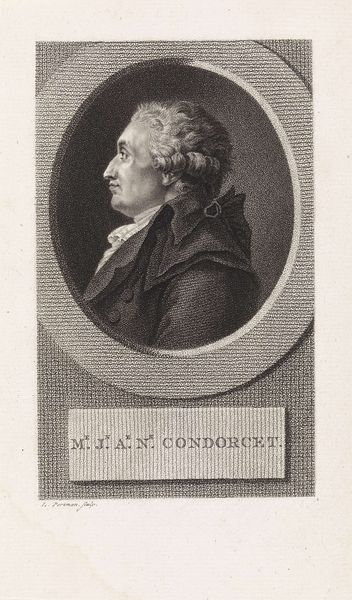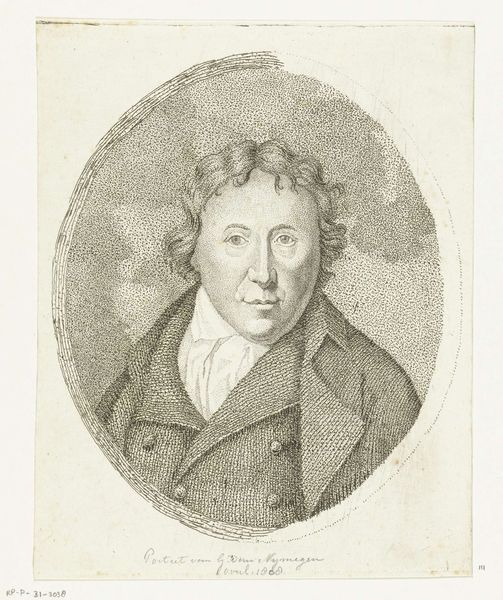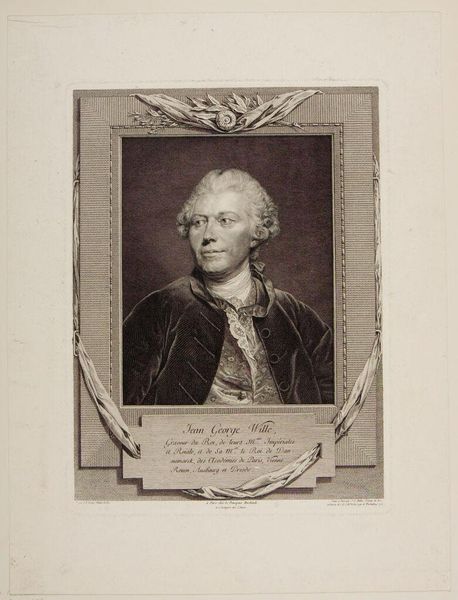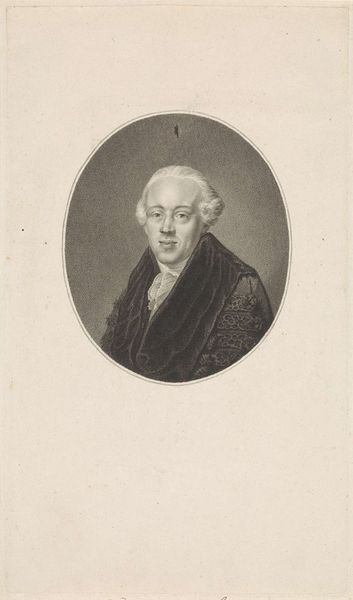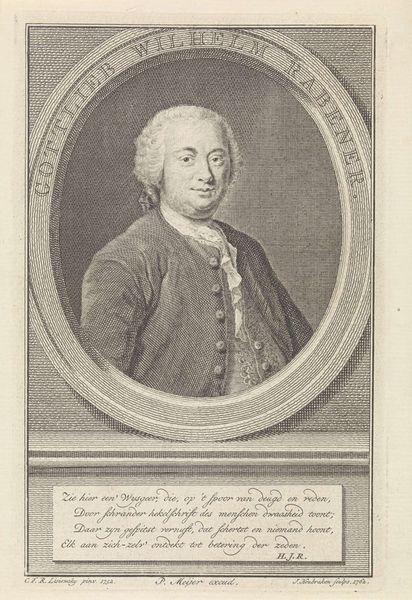
print, etching, engraving
#
portrait
#
neoclacissism
# print
#
etching
#
pencil drawing
#
engraving
Dimensions: height 239 mm, width 164 mm
Copyright: Rijks Museum: Open Domain
Editor: This is a portrait of Thomas Gainsborough, rendered as an etching and engraving sometime between 1787 and 1815 by Francesco Bartolozzi. The details are so delicate; he looks like a man caught in a moment of thought, perhaps even a little melancholic. What strikes you when you look at this portrait? Curator: Immediately, I notice the classical framing—the oval shape recalls ancient cameos. And within that form, we have Gainsborough, yes, but also a constructed image playing on societal memory. Note how the ascot and loosely fitted jacket invoke the gentleman artist—an increasingly acceptable persona thanks to the Neoclassical interest in individualized genius. The visual vocabulary says "artist," but an artist approved by the established order. Editor: So, you’re saying it’s not just *of* Gainsborough, but about creating a particular *idea* of Gainsborough? Curator: Precisely. Bartolozzi wasn't just capturing a likeness; he was crafting a symbol. Consider the gaze: direct, but soft. Not challenging, but inviting contemplation. What psychological message do you think that projects to the viewer of that era? Editor: Hmmm, it feels very… considered. Almost as if he's inviting conversation, but on his terms, showcasing his artistic sensitivity. Curator: Yes, it's a cultivated persona, aligning with the rise of sensibility in the late 18th century. This portrait thus acts as both record and cultural artifact. We see not just the artist, but the values and aspirations of his time. Editor: That's fascinating! I never considered how much a portrait could communicate beyond just physical appearance. Thanks for shedding some light on that! Curator: My pleasure. These images offer so many layers once we start digging beneath the surface, and appreciate visual symbology.
Comments
No comments
Be the first to comment and join the conversation on the ultimate creative platform.
